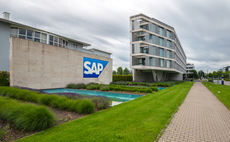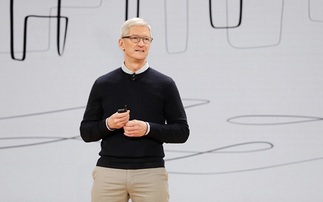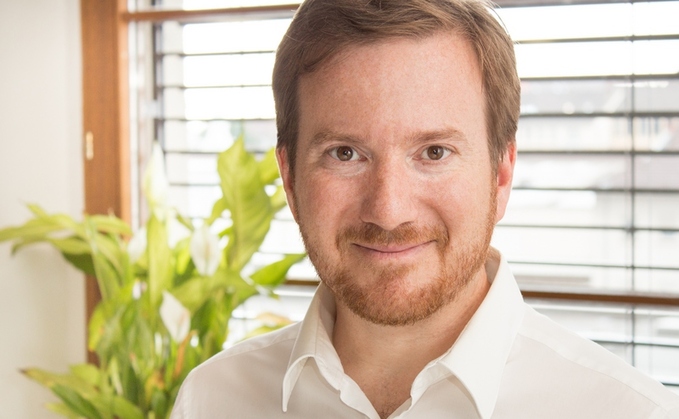
Turning Teal: Experiments with self-management at SAP
'We like to pretend that we can predict the future based on past events, but we can't', says Tobias Haug, head of humanising business at SAP
Recruitment and retention is a perennial issue for all organisations. Good people bring the energy, ideas and innovation without which the business is nothing. Retaining such individuals is all about keeping them happy and productive, free to deliver on their potential. For many people, satisfaction is firmly linked to the degree of autonomy that they and their teams are allowed. Agile practices are now common even software development (you build it, you run it), and these ideas are crossing boundaries. Even traditionally hierarchical organisations like the military are looking to flatter structures to promote teamwork and mutual reliance
It's all a response to the unpredictability of the modern world and the pace of change, according to Tobias Haug, Head of Humanising Business at German software giant SAP. Whether reacting to changes in the marketplace or being able to quickly deploy troops to trouble-spots, the old predict-and-provide model is increasingly unreliable. "We like to pretend that we can predict the future based on past events, right? But that's less and less valid, especially now that we want to stay agile, and especially if we want to be become more customer-centric."
A decade ago, inspired by Frederic Laloux's Reinventing Organisations, US General Stanley McChristal's Team of Teams and other works about organisational structure, Haug helped set up the SAP AppHaus in Heidelberg, Germany, a space for experiments in working culture. European firms like SAP are more open to a human-centric approach, he said, contrasting them with the "hire and fire" culture of his native USA. "It was my chance to start a rather independent organisation based on those principles that had inspired me, and all of a sudden I had this kind of playground to do that."
Teal organisations
At the heart of Laloux's philosophy is the Teal organisation, which has a flat structure and is based on autonomous groups and self-organisation. How this works in practice varies tremendously, but examples include the enormous Chinese manufacturer Haier Group which broke itself into a thousand mini-companies, MorningStar, an American food company where employees suggest their own salaries which are approved by colleagues, all the way up to the CEO, and Buurtzorg, a Dutch organisation that sparked a revolution in nursing home care. However, said Haug, there is no-one-size-fits-all. It's about what works in a particular location or type of business.
A room left empty
SAP's Customer Success building in Barcelona is home to 400 sales and support staff and 50 developers. It features a room with a ping pong table, yoga area and some sports equipment. Nothing exceptional about that, you might think, but for a while the room was deliberately left empty.
"Honest to God, we refused to put anything in it until the employees said, 'We want that. Can we have a ping pong table? Can I bring boxing equipment in or do yoga?"
The point being made was that without self-organisation nothing will happen, but once a decision has been made, the company will support it: "Then it becomes real."
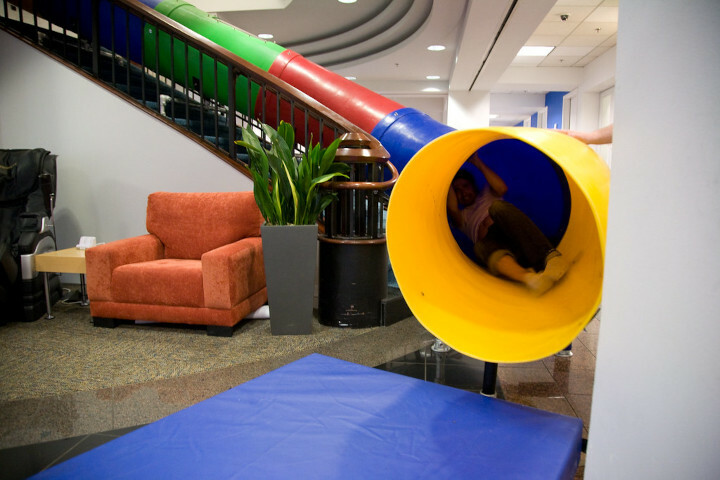
Potential employees are right to have a "healthy distrust of trendy trappings" like beanbags and ball pits. "I know plenty of people at Google, and they tell me no-one uses the slides," said Haug, referring to the company's iconic stairs alternative. In Teal organisations most decisions are bottom up. With empowerment comes responsibility for the outcome, and that leads to greater autonomy, the theory goes.
When promoting these ideas, Haug consciously avoids mentioning Teal organisations and other jargon ("bullshit bingo") as he feels it puts off as many people as it enlightens. Instead, he focuses on small actions that make a difference, as with the ping pong room. Management at SAP "get it" and see the benefits for agility and productivity, he said, although they have a tendency to think in terms of KPIs and reproducible models.
"I keep having to push back to our top brass who are looking for easy, scalable, reproducible results, and say no, let's take it step by step and stay context-aware."
Taking responsibility
It's not all about flattening hierarchy, said Haug. Sometimes traditional structures work just fine, but in Barcelona, where employees are disproportionately young and mobile, a bottom-up approach to decision-making, including staff even writing job descriptions for their managers, has worked wonders with improved retention and productivity. The department has doubled in size in the last four years and "everyone feels much more empowered and have a sense of ownership".
However, that doesn't mean the same approach will work in other countries, or even other offices in Spain, and things could always slide back. Overcoming hurdles such as fear of change, undue faith in the old ways of doing things (even when they no longer work) and concern about unleashing anarchy, requires a consistent presence on the ground.
"The first principle is make it the responsibility of the location," Haug said. "It starts with having somebody with a sense of ownership for this topic. It can't be done remotely; it can't be done like as-a-service. It really has to be driven by the leadership and by all the individuals locally to understand the context, the people and the behaviours."
Another thing to realise is that while the underlying principles are the same, the outcomes may look different across locations. "The type of culture that is best for those people in that context could look different than Barcelona, but be just as powerful."
The playbook
There are many ways the approach can pan out. It might be a four-day week, it could be everyone working remotely and meeting for a whole week once a quarter (both approaches that have been tried successfully).
Drawing on his experience of implementing "human driven change" at SAP, including 4 years at Barcelona, Haug has put together a 190-page playbook aimed at "people who want to roll up their sleeves and get their hands dirty," which he shares with partners and customers, as well as with other departments and regions in SAP. Many companies, he says, see the sense of the approach but don't quite know where to start.
The playbook covers basic advice such as how to get budget on a location level for office events that connect people, descriptions of interventions that were tried and proved successful (or not), and examples of how to get around the sort of rigid, process-driven culture that is common in large organisations, and which often stifles innovation.
It suggests lots of small measures to help people get over their mental hurdles. "As soon as you get people to experience it and do it, they're like, OK, that wasn't as difficult as I thought," Haug said.
"It feels like you're returning to something more natural, like you're shedding unnecessary layers of complexity that have built up over years. Once people experience it, and I'm also talking about leaders and managers and organisational heads and board members, they want more. "
At that stage, new behaviour will start to generate energy and take on a momentum of its own.
Towards Teal at SAP
Which is not to say it's easy. A company like SAP is "hyper operational - we have optimised everything to the best degree possible," and trusting teams to make their own decisions does not always come easy, requiring a stepping back that may seem contradictory in a data-driven age. To which Haug's answer is just try it at a small scale. "People will want to do more of it. They're going to exude that energy and they're going to inspire more people to do it."
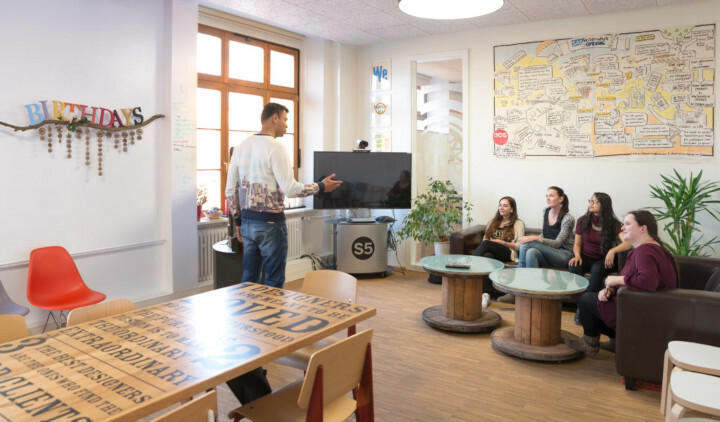
While he's confident of the movement's underpinnings, there will doubtless be "some waves" over the next decade. One early test will be flexible working. Like many companies, SAP is keen to get people back to the office. How would Haug feel if that were enforced from above, rather than the decision of individuals and teams?
"Well the board has pledged for flexibility which they've stood behind, and they've really trusted the teams to make a lot of decisions," he said. "At the same time, they are saying there are still lots of benefits for being together. I like the fact that they're not doing it as a pressure play like an Elon Musk. They're trying to create a pull, how do we make the office even better?"
The quid pro quo of having more autonomy is that employees must consider issues within a larger context. One example: the brutal truth is that if no-one comes into the office it will be sold.
"It's about ownership and understanding and transparency, which is also a core part of moving towards the Teal organisation. You can only make great decisions if you also take ownership for them and responsibility for the consequences. It's not someone else's problem."









